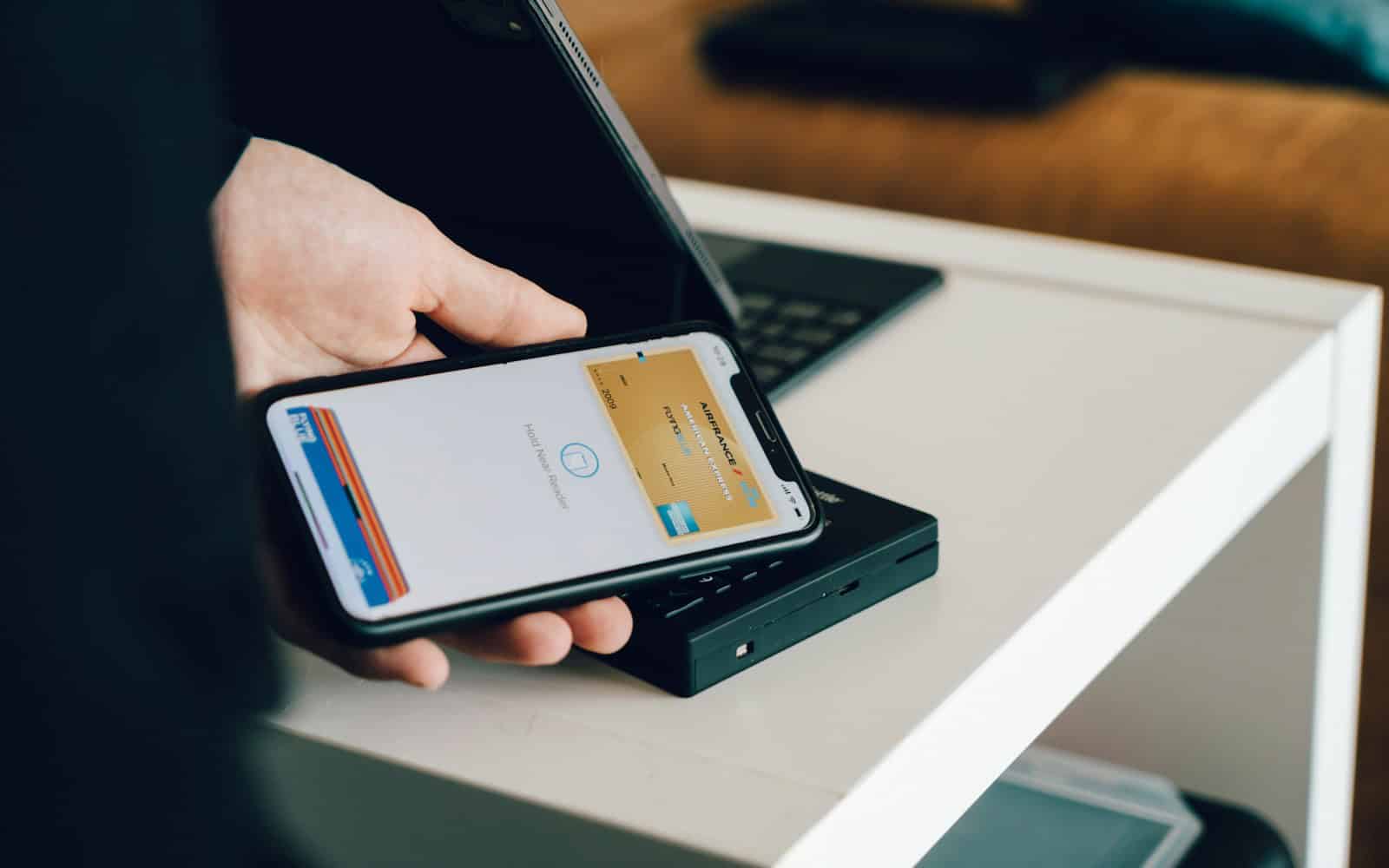Apple Pay makes digital payments easy, but what if you spot a charge you don’t recognize? Disputing an Apple Pay transaction can seem daunting, but it’s a straightforward process. You can contest incorrect or fraudulent charges directly through your bank or card issuer in most cases.
If you see a questionable Apple Pay charge, check your transaction history first. The Wallet app on your iPhone shows recent Apple Pay activity. Make sure it wasn’t a purchase you forgot about or one made by a family member. For Apple Card users, you can report issues right in the Wallet app.
For other cards, contact your bank or card issuer to start a dispute. They’ll guide you through their process. You may need to provide the transaction date, amount, and merchant name. Stay calm – banks deal with disputes often and are there to help protect you from fraud.
| Dispute Method | When to Use | Timeframe |
|---|---|---|
| Wallet App | Apple Card | Up to 90 days |
| Bank/Issuer | Other cards | Varies by bank |
| Merchant | Billing error | Usually 60 days |
🔎 1. Review the Transaction
- Open the Wallet app on your iPhone or iPad.
- Select the card you used with Apple Pay.
- Tap the transaction in question to see details (merchant name, date, amount).
- Double‑check whether the charge is legitimate (e.g., recurring subscription, pending hold, or family sharing purchase).
📑 2. Gather Documentation
Before filing a dispute, collect:
- Receipts or order confirmations.
- Screenshots of the transaction in Wallet.
- Any communication with the merchant (emails, chat logs, refund requests).
This will strengthen your case.
🛒 3. Contact the Merchant First
In many cases, the fastest resolution comes directly from the merchant:
- Ask for a refund or cancellation.
- Provide your proof of purchase or evidence of error.
- Allow a few business days for them to respond.
🏦 4. File a Dispute with Your Card Issuer
If the merchant does not resolve the issue:
- Go back to the Wallet app, select the transaction, and tap Report an Issue.
- You’ll be redirected to your card issuer (bank or credit card provider).
- Follow their dispute process — this may involve filling out a form or speaking with a representative.
For Apple Card users: disputes are handled by Goldman Sachs Bank. You can start directly in the Wallet app, and Goldman Sachs may email you for more details (source: Apple).
⏳ 5. Wait for Investigation
- Your bank will investigate the claim.
- While under review, you usually don’t have to pay the disputed amount or related interest.
- If approved, the charge will be reversed, and you may see a temporary credit while the case is pending.
✅ 6. Monitor Updates
- Keep an eye on your email and Wallet app notifications.
- Respond promptly if your bank requests more details.
- Track whether the credit becomes permanent once the case is resolved.
⚠️ Tips
- Act quickly — most banks have a 60–120 day window to file disputes.
- Always try the merchant first; banks often require proof you attempted resolution.
- If the transaction looks fraudulent, immediately lock your card and request a replacement.
Understanding Apple Pay Transactions
Apple Pay simplifies digital payments on Apple devices. It combines security and convenience for users making purchases.
How Apple Pay Works
Apple Pay uses Near Field Communication (NFC) technology for contactless payments. You can set it up on your iPhone, iPad, Apple Watch, or Mac. To add a card, open the Wallet app and tap the plus sign.
When making a purchase, double-click the side button on your iPhone or Apple Watch. Use Face ID or Touch ID to authenticate. Hold your device near the payment terminal. A subtle vibration and beep confirm the transaction.
For online purchases, select Apple Pay at checkout. Authenticate with Face ID, Touch ID, or your passcode. Your payment info is securely transmitted.
Apple Pay doesn’t store your actual card numbers. It creates a unique Device Account Number for each transaction. This enhances security and protects your financial data.
| Device | Authentication Method |
|---|---|
| iPhone | Face ID or Touch ID |
| Apple Watch | Double-click side button |
| iPad | Touch ID or passcode |
| Mac | Touch ID or iPhone/Apple Watch |
Identifying Disputes and Issues
Recognizing issues with Apple Pay transactions is crucial for protecting your finances. You can spot problems by reviewing your transaction history and merchant details carefully.
Recognizing Unauthorized Transactions
Check your Apple Pay transaction history regularly. Look for purchases you don’t remember making. Unfamiliar merchant names or locations can be red flags.
Pay attention to transaction amounts. Even small charges could indicate fraud. Criminals often test stolen cards with minor purchases.
If you suspect an unauthorized transaction:
- Contact your bank immediately
- Report the issue in the Wallet app
- Change your Apple ID password
- Enable two-factor authentication if not already active
Incorrect Merchant Information and Charges
Sometimes legitimate transactions may have errors. Review merchant names and categories in your transaction history. Look for:
- Misspelled business names
- Wrong merchant categories
- Incorrect charge amounts
To dispute incorrect information:
- Open the Wallet app
- Select the card used for the transaction
- Tap the transaction in question
- Choose “Report an Issue”
- Select the specific problem (e.g., wrong merchant name)
| Issue Type | Action Required |
|---|---|
| Wrong Name | Provide correct merchant name |
| Wrong Category | Select proper business category |
| Incorrect Amount | Enter the right transaction amount |
Addressing these issues promptly helps maintain accurate financial records and prevents potential overcharges.
Resolving Disputes with Apple Pay
Apple Pay disputes can be resolved through a structured process involving communication with merchants, banks, and Apple. The steps typically include initiating the dispute, working with involved parties, and understanding Apple’s role in the resolution.
Initiating a Dispute
To start a dispute for an Apple Pay transaction, you need to act quickly. Open the Wallet app on your iPhone and find the transaction in question. Tap on it to view details. Look for an option to report an issue. Select the appropriate reason for your dispute.
For Apple Card transactions, you can dispute directly through the Wallet app. For other cards, you may need to contact your bank or card issuer. Keep transaction details handy when you call.
Apple Cash disputes require contacting Apple Support. They’ll guide you through the process and may ask for additional information about the transaction.
Communication with Merchant or Bank
After initiating a dispute, your next step often involves talking to the merchant. Many issues can be resolved directly without escalation. Contact the merchant using the information on your receipt or from their website.
If merchant communication fails, your bank becomes your main point of contact. They’ll investigate the charge and may request more details. Be prepared to provide:
- Transaction date and amount
- Merchant name
- Reason for dispute
- Any communication with the merchant
Banks typically have 30-90 days to resolve disputes. During this time, you might see a temporary credit on your account.
Apple’s Role in Resolving Disputes
Apple’s involvement in dispute resolution varies based on the payment method used. For Apple Card, Apple works with Goldman Sachs to handle disputes. They may contact you for more information during the investigation.
For other cards, Apple’s role is limited. They provide transaction data to your bank but don’t directly resolve disputes. Apple Cash disputes are handled by Apple’s financial partner.
If your card was compromised, Apple helps secure your device. They can assist in removing the card from Apple Pay and guide you through adding a new one.
| Dispute Type | Primary Contact | Apple’s Role | Resolution Time |
|---|---|---|---|
| Apple Card | Wallet App | Direct Support | Up to 90 days |
| Other Cards | Card Issuer | Data Provider | Varies by bank |
| Apple Cash | Apple Support | Full Support | Typically 30 days |
Prevention and Management
Protecting your Apple Pay transactions requires proactive steps and vigilant monitoring. By implementing smart practices you can significantly reduce the risk of unauthorized charges.
Managing Payment Cards and Transactions
Keep your Apple Wallet app organized. Regularly review linked payment cards and remove any you no longer use. Set up notifications for all transactions to stay informed. Check your latest transactions frequently to spot any unusual activity.
Create strong, unique passwords for your Apple ID and linked accounts. Enable two-factor authentication for an extra layer of security. If you use Family Sharing, monitor activity across all linked accounts.
| Transaction Management Tips |
|---|
| Review linked cards monthly |
| Set up transaction alerts |
| Check activity weekly |
| Use strong passwords |
| Enable two-factor auth |
Protecting Against Unauthorized Transactions
Be cautious when using Apple Pay in public. Shield your screen when entering passcodes. Avoid using unsecured Wi-Fi networks for transactions. If you lose your device, immediately use Find My iPhone to put it in Lost Mode.
Keep your iOS and watchOS software up to date. These updates often include important security patches. Be wary of phishing attempts asking for your Apple ID or card information. Apple will never request this via email or text.
If you suspect fraud, contact your card issuer immediately. They can help you dispute charges and may be able to cancel payments. Remember, quick action is key in preventing further unauthorized transactions.
Frequently Asked Questions
Apple Pay users often encounter issues with transactions. These questions address common concerns about disputing charges, getting refunds, and reporting problems.
How can I dispute an Apple Pay transaction on my bank’s website?
To dispute an Apple Pay transaction on your bank’s website, log into your online banking account. Find the specific charge in your transaction history. Look for a “dispute” or “report issue” option next to the transaction. Follow your bank’s process to submit the dispute.
What is the process for disputing an Apple Pay transaction on iPhone?
To dispute an Apple Pay transaction on iPhone, open the Wallet app. Tap the card used for the purchase. Find the transaction and tap it. Select “Report an Issue” and choose the appropriate reason. Follow the prompts to complete the dispute process.
Who can I contact to discuss an Apple Cash transaction dispute?
For Apple Cash transaction disputes, contact Apple Support directly. They handle issues related to person-to-person payments made through Messages. Apple Support can guide you through the steps to resolve your Apple Cash dispute.
Is it possible to get a refund for a disputed Apple Pay transaction?
Yes, you can get a refund for a disputed Apple Pay transaction. The outcome depends on the investigation results. If the dispute is resolved in your favor, the refund will be credited to your original payment method.
How can I reverse an Apple Pay transaction?
You cannot directly reverse an Apple Pay transaction. Instead, you need to request a refund from the merchant. If the merchant agrees, they can process the refund to your original payment method.
What should I do to report a problematic transaction on Apple Pay?
To report a problematic Apple Pay transaction, first contact the merchant. If unresolved, report the issue through your iPhone’s Wallet app. Select the card, find the transaction, and tap “Report an Issue”. Choose the appropriate reason and follow the steps provided.
| Dispute Method | Steps to Take | Who to Contact |
|---|---|---|
| Bank Website | Log in, find transaction, select “dispute” | Your bank |
| iPhone Wallet | Open app, tap card, select transaction, “Report an Issue” | Apple/Card issuer |
| Apple Cash | Contact Apple Support directly | Apple Support |
| Merchant Refund | Contact merchant for reversal | Merchant |







